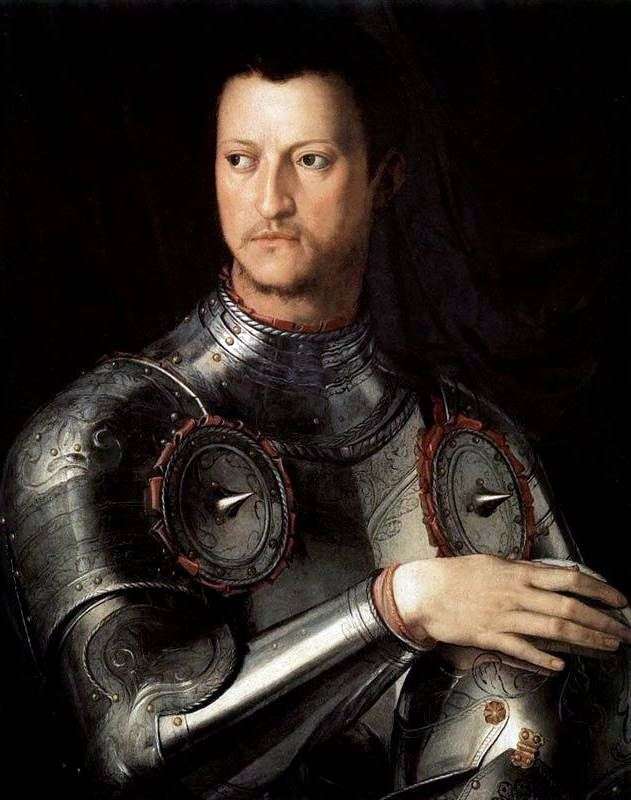
Painting by Angelo Bronzino “Portrait of Cosimo the First Medici in Lats”. The size of the picture is 74 x 58 cm, wood, tempera. On the portrait we see a strong, strong-willed, self-confident and in his infallibility of man. This is how a court portrait painted by a court artist should be.
Lomazzo writes: “A prudent artist, portraying a ruler, should give him nobility and dignity, even if in fact he is not.” Court art, emerging in these conditions in Italy 40-90-ies, develops on the basis of the traditions of early Mannerism and represents the next, mature stage of this direction.
But mature Mannerism loses dramatic tension, pessimistic coloring, acquires an officially academic or purely decorative character. If the gap with reality in early Mannerism was often caused by a sense of the invincibility of life’s contradictions, now the call of theorists to follow the abstract “idea” of perfection is closely related to the requirements of court culture.
In some cases, indifference to a person, the propensity for formal experiments reaches artists of this time to such an extent that they act as precursors of decadent trends in contemporary art. Such are, for example, the drawings of Luke Cambiaso, replacing the heads of human figures with abstract cubes, or the monstrous “surrealistic” allegories of the seasons, the four elements, the landscapes of Giuseppe Arcimboldo, made up of flowers, leaves, fruits and vegetables.
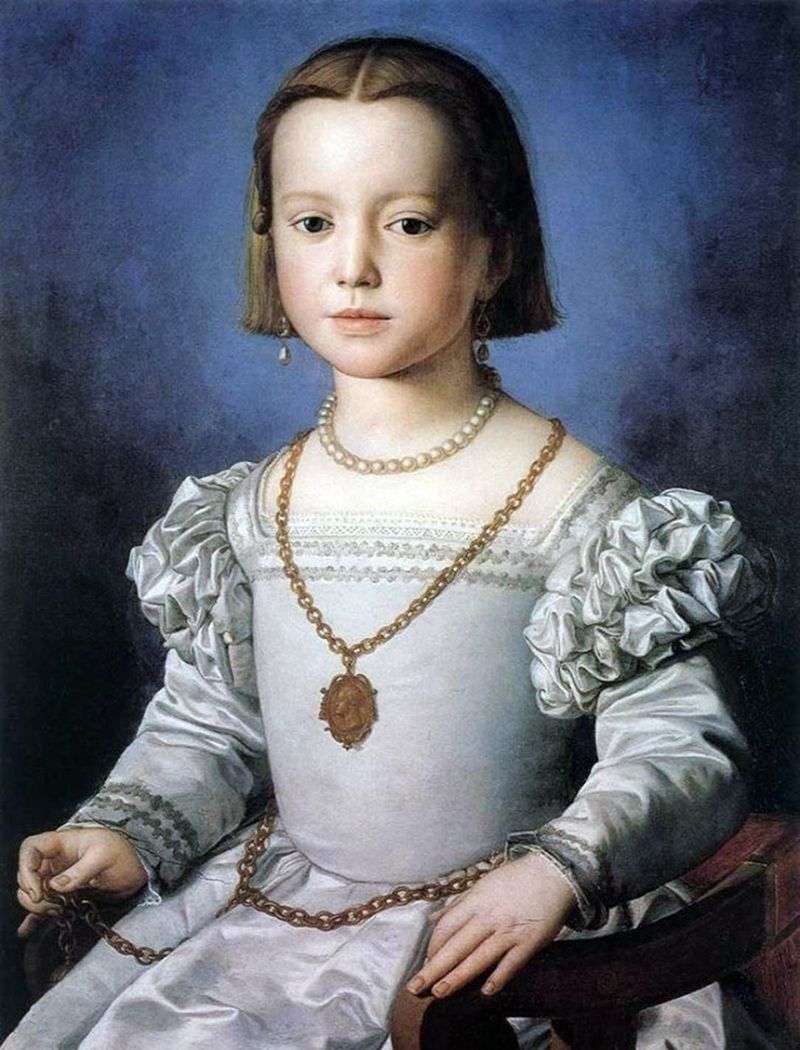 Portrait of Bia Medici, daughter of Cosimo I by Agnolo Bronzino
Portrait of Bia Medici, daughter of Cosimo I by Agnolo Bronzino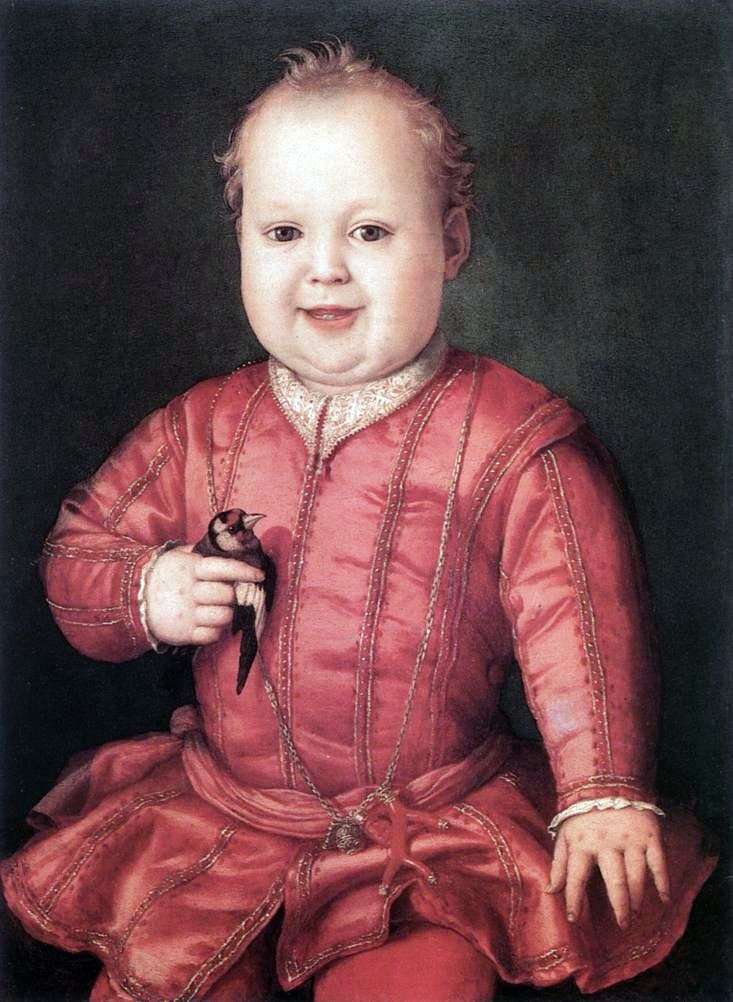 Portrait of Giovanni Medici by Agnolo Bronzino
Portrait of Giovanni Medici by Agnolo Bronzino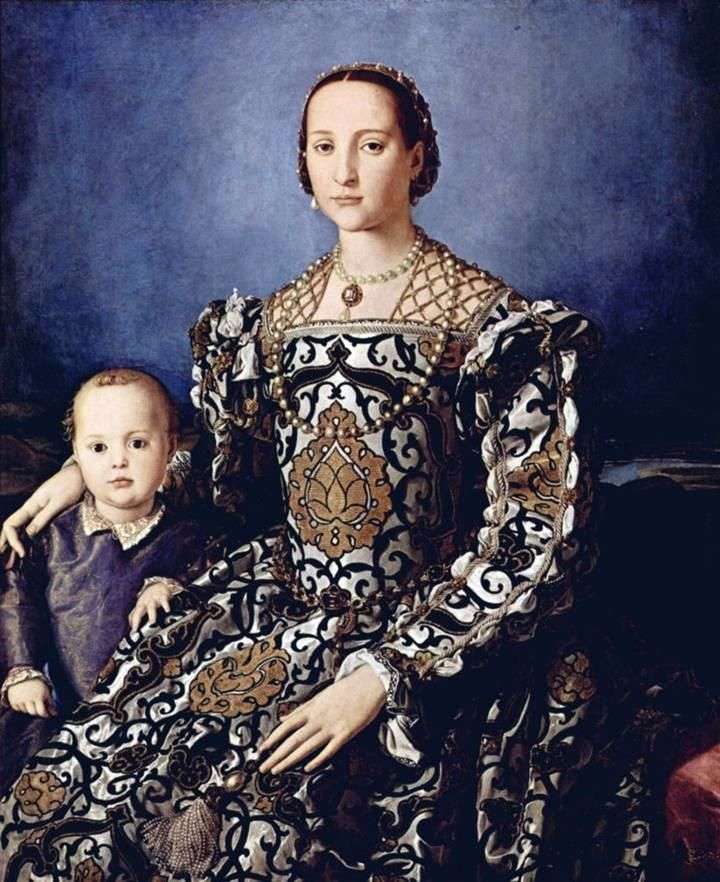 Portrait of Eleanor of Toledo with his son Giovanni Medici by Agnolo Bronzino
Portrait of Eleanor of Toledo with his son Giovanni Medici by Agnolo Bronzino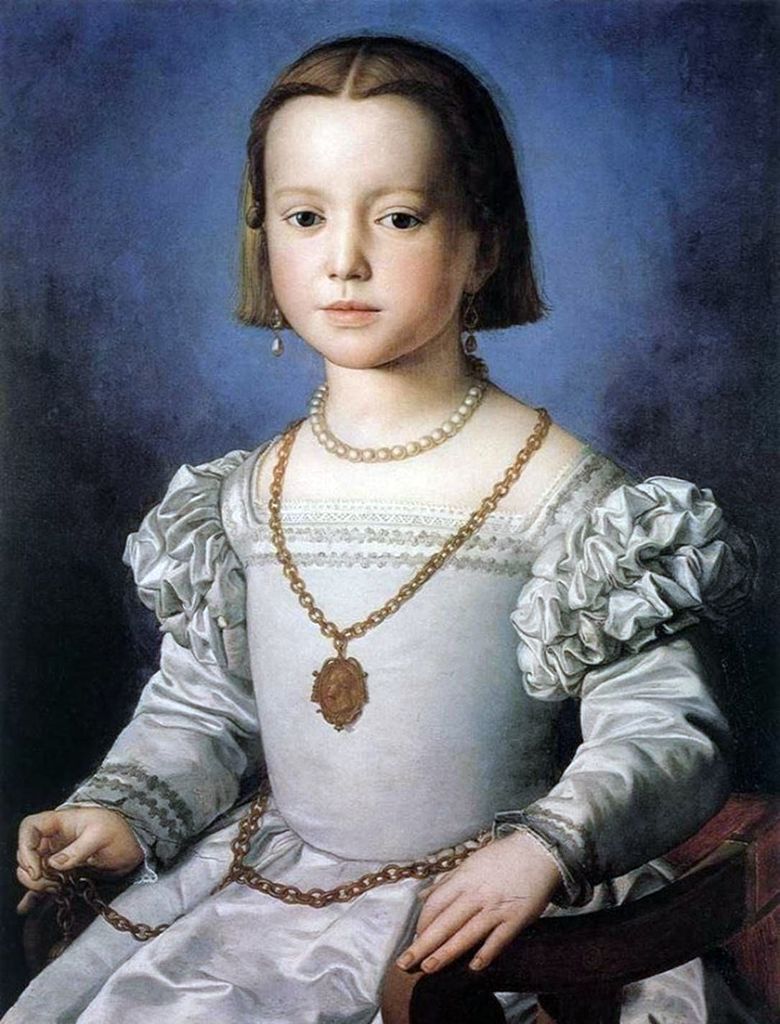 Portrait de Bia Medici, fille de Cosimo I – Agnolo Bronzino
Portrait de Bia Medici, fille de Cosimo I – Agnolo Bronzino Lucrezia Panchiatiki by Agnolo Bronzino
Lucrezia Panchiatiki by Agnolo Bronzino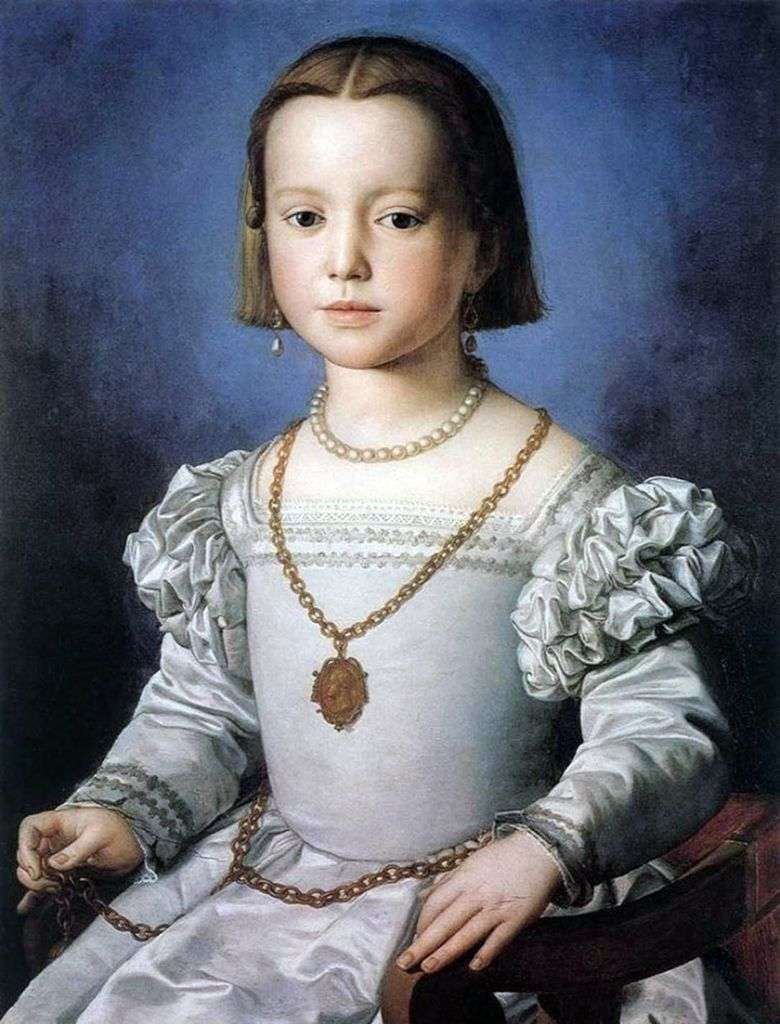 Retrato de Bia Medici, hija de Cosimo I – Agnolo Bronzino
Retrato de Bia Medici, hija de Cosimo I – Agnolo Bronzino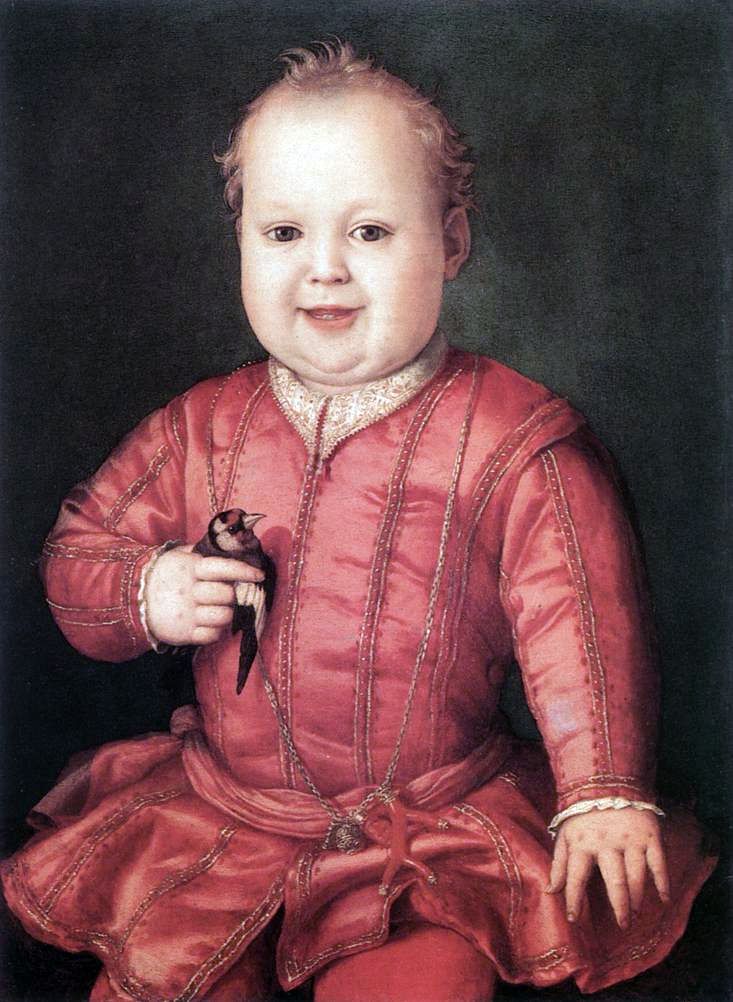 Portrait de Giovanni Medici – Agnolo Bronzino
Portrait de Giovanni Medici – Agnolo Bronzino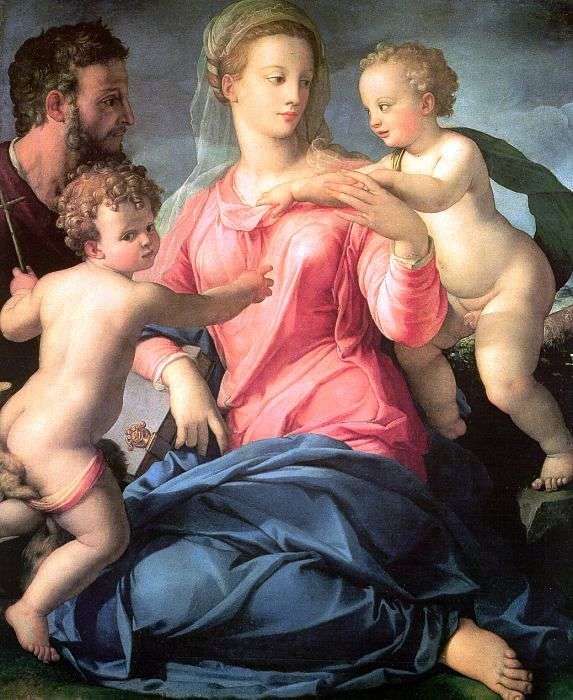 The Holy Family with the Little John the Baptist (Madonna Stroganova) by Agnolo Bronzino
The Holy Family with the Little John the Baptist (Madonna Stroganova) by Agnolo Bronzino